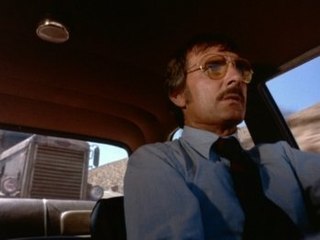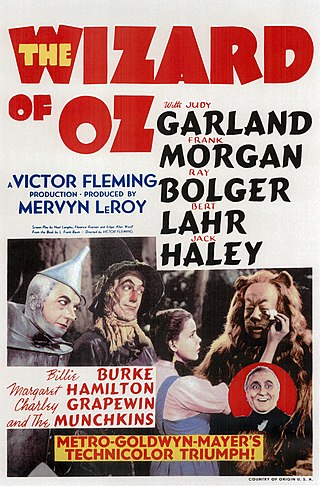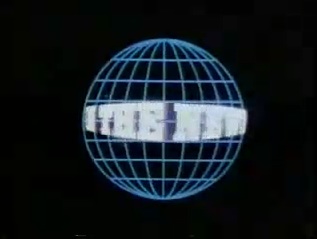"Saturday-morning cartoon" is a colloquial term for the original animated series and live-action programming that was typically scheduled on Saturday and Sunday mornings in the United States on the "Big Three" television networks. The genre's popularity had a broad peak from the mid-1960s through the mid-2000s; over time it declined, in the face of changing cultural norms, increased competition from formats available at all times, and heavier regulations. In the last two decades of the genre's existence, Saturday-morning and Sunday-morning cartoons were primarily created and aired to meet regulations on children's television programming in the United States, or E/I. Minor television networks, in addition to the non-commercial PBS in some markets, continue to air animated programming on Saturday and Sunday while partially meeting those mandates.
An animated series is a type of animated television works with a common series title, usually related to one another. These episodes should typically share the same main characters, some different secondary characters and a basic theme. Series can have either a finite number of episodes like a miniseries, a definite end, or be open-ended, without a predetermined number of episodes. They can be broadcast on television, shown in movie theatres, released direct-to-video or on the internet. Like other television series, films, including animated films, animated series can be of a wide variety of genres and can also have different demographic target audiences, from males to females ranging children to adults.

The Walt Disney Company has produced an anthology television series since 1954 under several titles and formats. The program's current title, The Wonderful World of Disney, was used from 1969 to 1979 and again from 1991 onward. The program moved among the Big Three television networks in its first four decades, but has aired on ABC since 1997 and Disney+ since 2020.

ABC Kids was an American Saturday morning children's programming block that aired on ABC from September 13, 1997 to August 27, 2011. It featured a mixture of animated and live-action series from Walt Disney Television Animation and Disney Channel, aimed at children between the ages of 6 and 14. This was the only time Disney Channel content aired on over-the-air television in the United States.

The Movie Channel (TMC) is an American premium television network owned by Showtime Networks, a subsidiary of Paramount Global operated through its Paramount Media Networks division. The network's programming mainly features first-run theatrically released and independently produced motion pictures, and during promotional breaks between films, special behind-the-scenes features and movie trivia.

Turner Classic Movies (TCM) is an American movie-oriented pay-TV network owned by Warner Bros. Discovery. Launched in 1994, Turner Classic Movies is headquartered at Turner's Techwood broadcasting campus in the Midtown business district of Atlanta, Georgia.
In broadcast programming, dayparting is the practice of dividing the broadcast day into several parts, in which a different type of radio programming or television show appropriate for that time period is aired. Television programs are most often geared toward a particular demography, and what the target audience typically engages in at that time.

La Linea is an Italian animated series created by the Italian cartoonist Osvaldo Cavandoli. The series consists of 90 episodes, which were originally broadcast on the Italian channel RAI between 1971 and 1986. The background tune for the series was created by Franco Godi.

Rejected is a 2000 animated surrealist comedy short film directed by Don Hertzfeldt that was released in 2000. It was nominated for an Academy Award for Best Animated Short Film the following year at the 73rd Academy Awards, and received 27 awards from film festivals around the world.

The Bugs Bunny Show is a long-running American animated anthology television series hosted by Bugs Bunny that was mainly composed of theatrical Looney Tunes and Merrie Melodies cartoons released by Warner Bros. between 1948 and 1969. The show originally debuted as a primetime half-hour program on ABC in 1960, featuring three theatrical Looney Tunes cartoons with new linking sequences produced by the Warner Bros. Cartoons staff.

The Tom and Jerry Comedy Show is an American animated television series produced by Filmation for MGM Television featuring the popular cartoon duo Tom and Jerry. The show first aired on September 6, 1980 on CBS and continued until December 13 the same year. Its episodes were eventually added to syndicated Tom and Jerry packages in 1983. Episodes of the show also occasionally appeared on Cartoon Network and Boomerang.

Nick on CBS was an American Saturday morning children's programming block featuring programming from Nick Jr. and Nickelodeon that ran on CBS from September 16, 2000, to September 9, 2006. It initially aired programming from the Nick Jr. block until 2002, when it began airing mainline programming from Nickelodeon; in 2004, it switched back to its previous format.

The ABC Movie of the Week was an American weekly television anthology series featuring made-for-TV movies that aired on the ABC network in various permutations from 1969 to 1975.

TV's Bloopers & Practical Jokes is an American television series. Debuting as a weekly series, new episodes have been broadcast as infrequent specials during most of its run. It premiered on NBC in 1984, moved to ABC in 1998, and was revived in syndication in 2012. The NBC run of the series was co-produced by Carson Productions and Dick Clark Productions, and the ABC and syndication runs have been produced solely by Dick Clark Productions.

The Wizard of Oz, produced by Metro-Goldwyn-Mayer (MGM), was first released in theatres on August 15, 1939. The film was then re-released nationwide in 1949, and once more in 1955. The Wizard of Oz was broadcast on television for the first time on Saturday, November 3, 1956. The film was shown as the last instalment of the CBS anthology series Ford Star Jubilee. Since that telecast, The Wizard of Oz has been shown by CBS, NBC, The WB, and several of Ted Turner's national cable channels. The film has never been licensed to any local affiliate broadcast TV station. From 1959 to 1991, the showing of The Wizard of Oz was an annual tradition on American commercial network television. During these years, the film was always shown as a television special.
Canada Vignettes are a series of short films by the National Film Board of Canada (NFB), some of which aired on CBC Television and other Canadian broadcasters as interstitial programs. The vignettes became popular because of their cultural depiction of Canada, and because they represented its changing state, such as the vignette Faces which was made to represent the increasing cultural and ethnic diversity of Canada. The Log Driver's Waltz directed by John Weldon set to the recording of the song by Kate & Anna McGarrigle with, and as part of, The Mountain City Four is one of the most-requested items contained in the collection by the National Film Board of Canada. A similar series was later produced in the 1990s, however the name was changed to Heritage Minutes.
In regard to children's television programming, CBS has aired mostly animated series, such as the original versions of Scooby-Doo, Fat Albert and the Cosby Kids, Jim Henson's Muppet Babies, Garfield and Friends and the 1987 incarnation of Teenage Mutant Ninja Turtles. This article outlines the history of children's television programming on CBS including the various blocks and notable programs that have aired throughout the television network's history.
In regard to children's programming, the American Broadcasting Company (ABC) has aired mostly programming from Walt Disney Television or other producers. This article outlines the history of children's television programming on ABC including the various blocks and notable programs that have aired throughout the television network's history.

In the News is an American series of two-minute televised video segments that summarized topical news stories for children and pre-teens. The segments were broadcast in the United States on the CBS television network from 1971 until 1986, between Saturday morning animated cartoon programs, alongside features like Schoolhouse Rock! and One to Grow On, which aired on competing networks ABC and NBC, respectively. NBC also produced a competing segment called Ask NBC News.

TBS, stylized as tbs, is an American basic cable television network owned by the Warner Bros. Discovery U.S. Networks division of Warner Bros. Discovery (WBD). It carries a variety of programming, with a focus on comedy, along with some sports events, including Major League Baseball, Stanley Cup playoffs, NCAA men's basketball tournament and the weekly professional wrestling show AEW Dynamite. As of September 2018, TBS was received by approximately 90.391 million households that subscribe to a pay television service throughout the United States. By June 2023, this number has dropped to 71.3 million households.













